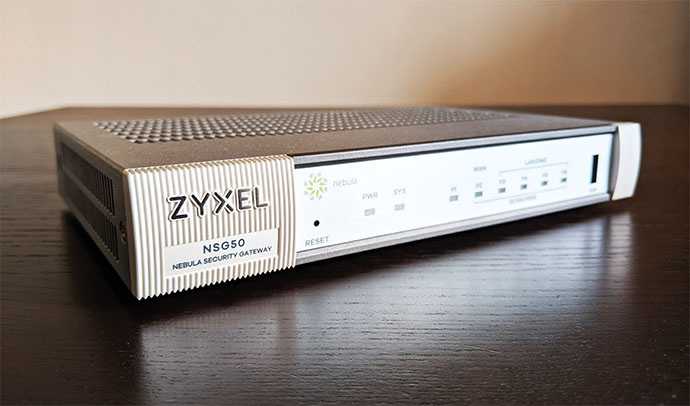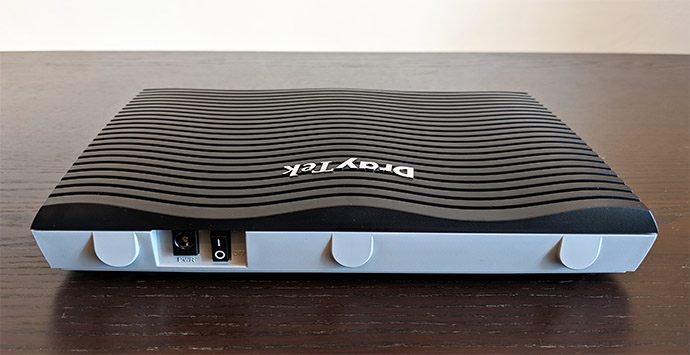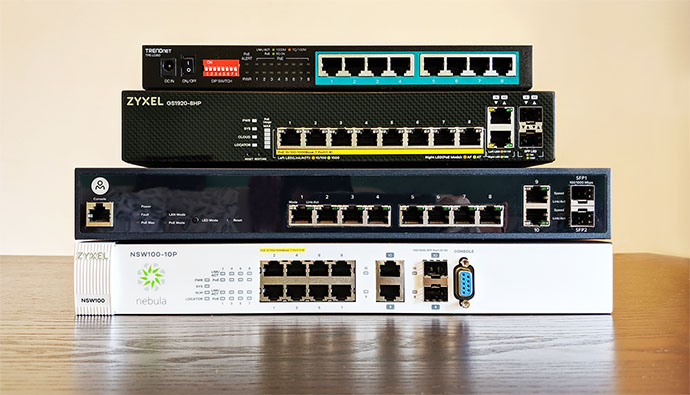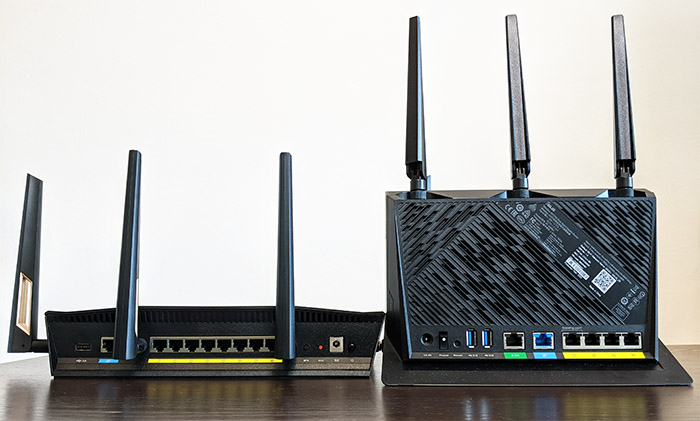I am fairly certain that when you ask if you can have two routers on one modem, you don’t really mean a main router and then a secondary device that will work as an access point (daisy-chaining – we will explore this option as well), but multiple Internet connections coming from a single cable modem with only one cable from the ISP. For this to be a realistic scenario, you may need to take into account the option of using multiple static IP address. The networking world holds many wonders, so let’s explore some of these possibilities and see if it’s something that can be done.
1. Multiple static IPs to connect two routers to one modem
This is perhaps the only way to actually be able to connect more than one router directly to a single modem and have them broadcast a completely different network. And it’s a surprisingly common practice with multiple businesses sharing a single space, even if it’s most likely going to be at the expense of the available bandwidth. But, depending on the type of work, it may not matter that much and you’d be surprised by how much you can actually achieve with a reliable 1Gbps connection, even if it’s split between multiple routers. And in our case, we are talking about two separate IPs, so the bandwidth should, technically, be plenty.
These are some general steps, so they most likely won’t apply to particular network configurations, but it’s what most people still use nowadays:
- Get more than one static IP from the ISP: you usually do get one IP address with each Internet plan (static or dynamic), but you do get the option to receive multiple static IP addresses, at an extra cost, as expected.
- Connect the coaxial cable to the modem (most likely DOCSIS if you’re in the US): for larger businesses, this isn’t the ideal solution due to the bandwidth limitation, so actual separate cables are far better, but for SMBs that don’t push large amount of data, a simple DOCSIS modem is enough (ideally, DOCSIS 3.0 and above).
- Connect a network switch to the cable modem: this can be the tricky part because you need to know what type of equipment is already in place or if there’s any specific hardware that the user prefers. So, you can choose either an unmanaged switch that will get connected to some powerful security gateways which will act as the entry point and create their own separate network or you can use managed switches. The former is the more simple option if there’s a single person (or department) that properly configures the network and then administers it. But, it can easily go very very wrong if the management is decentralized and each department tries to use each others allocated IP address. In that case, a managed switch that pushes the proper IP address towards gateways is the better solution, although a bit more complicated. What I have in mind is to create separate VLANs for each port that’s going to be used and call it a day.

- Connect the gateways to the switch and configure their Internet connection with the dedicated IPs.
- Make sure nobody except the system admins have access to the networking hardware rack.
Perhaps there are other interesting ideas that can be explored, but this is most likely the simpler way to have two or more routers connected to one modem.
2. Daisy chaining routers
This is another way to connect two routers on one modem, in a sense, because you actually get a primary router that’s configured to receive the link from the modem router and it will also give IP addresses to the LAN devices, while the secondary router will work more like an access point, extending the existing network. And the general steps to achieve it are the following:
- Power on the cable modem and make sure to have the ISP username and password at hand.
- Connect the router to the cable modem and configure it as you would normally do (Internet connection, WiFi networks and admin account). If you don’t need to make any particular changes, then this router should automatically allocate LAN IPs to every client device that you have connected.
- Prepare the secondary router. This means that it needs to be reset and then connected to a computer to gain an interface (insert the default IP address that’s written on the label most likely located at the bottom of the router). The majority of modern routers will allow you to set up the router as an access point, extender or in bridge mode, but not all have that option displayed at the beginning of the configuration. So you may need to configure it as a router and then navigate the web-based GUI (probably Advanced settings) to find a way to change its operation mode. In case the router doesn’t allow any other mode than to work as a router (unlikely, put possible), then just simply disable the DHCP (some older routers did require the user to set them up in Bridge Mode and then to disable the DHCP).
- Connect the secondary router to the main router using any LAN port from the latter and the WAN port from the former.
- You can now configure the way the secondary router operates by accessing the IP address received from the main router.
3. One router and two modems
You were wondering if you can have two routers on one modem, but what about two modems with one router? This is actually far more common than you think and it ties in nicely with the first option that we explored. The businesses that want a more reliable Internet connection and they can’t afford any downtime usually purchase more than one Internet connections, with separate lines. So, in case one link fails, then the other can immediately take its place, waiting for the first line to come back on.

To achieve a smooth transition between the connections, a dual-WAN router is required (or multi-WAN) which supports link aggregation, link fail-over and load balancing. I have explored a few options over the years that you can check here, but there are a few consumer-grade routers that support a more basic implementation as well. See the Asus RT-AC86U or the newer RT-AX86U, as well as the Synology RT2600ac.
Without getting into too many details, the idea is to have two cables from two separate Internet connections (two modems) that are connected to the router and you do have lots of options available from here on. You can aggregate the two links and have a far higher bandwidth available or, in our case, simply use one Internet connection all the time and have the other one ready to take its place. The better routers will make that transition happen without even noticing the first link failed. And what’s interesting is that these routers will actively check when the primary link returns and then switches back to it when it’s back online. That’s why the business owners should get a main Internet connection as close to one 1Gpbs as possible (or beyond), while the secondary can be a more basic maintenance-suitable connection, to reduce the costs.
Then again, if what you do is not tied that closely to a continuous Internet connection, you can simply keep a single Internet connection with a single modem and just hook up two routers to it, as we did in the first option we explored. It’s cheap and it works, but not reliable if you can’t afford any downtime.

Mark is a graduate in Computer Science, having gathered valuable experience over the years working in IT as a programmer. Mark is also the main tech writer for MBReviews.com, covering not only his passion, the networking devices, but also other cool electronic gadgets that you may find useful for your every day life.


